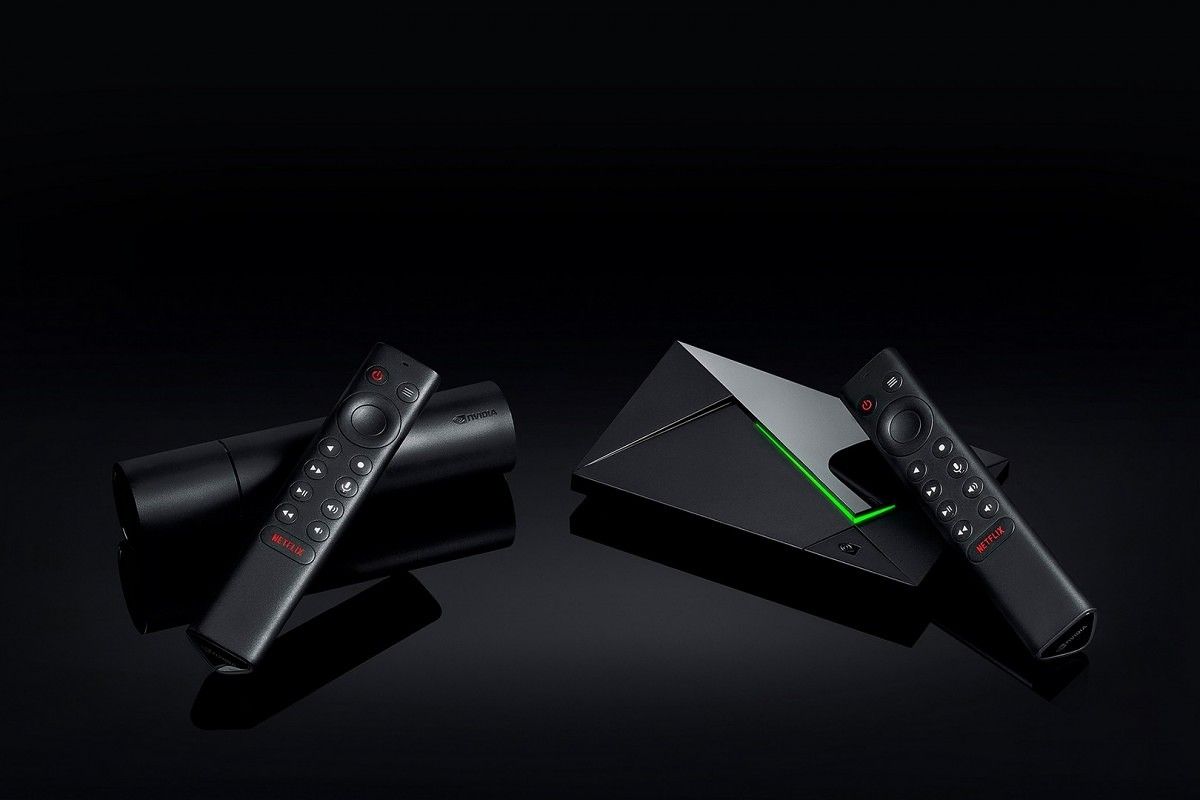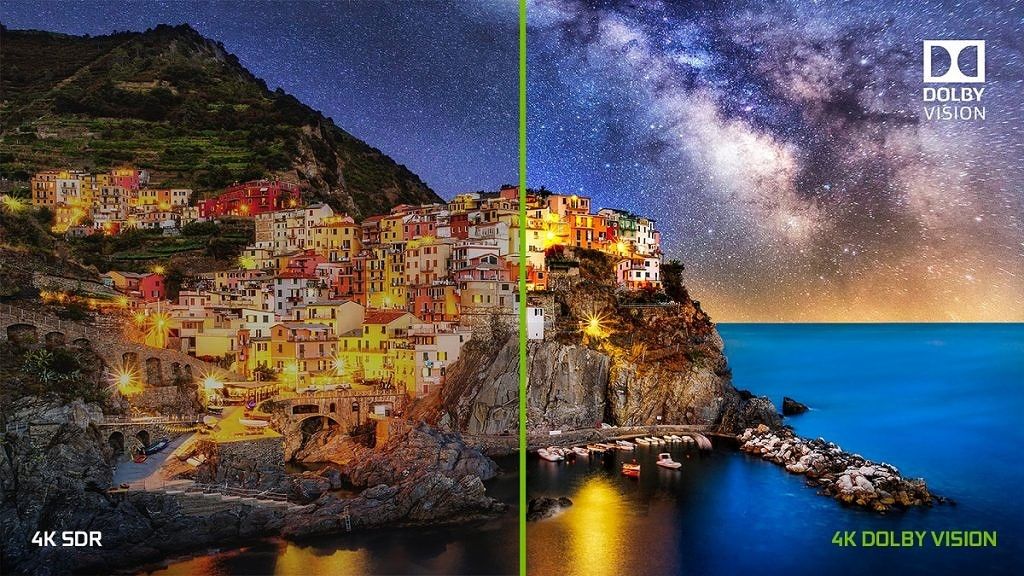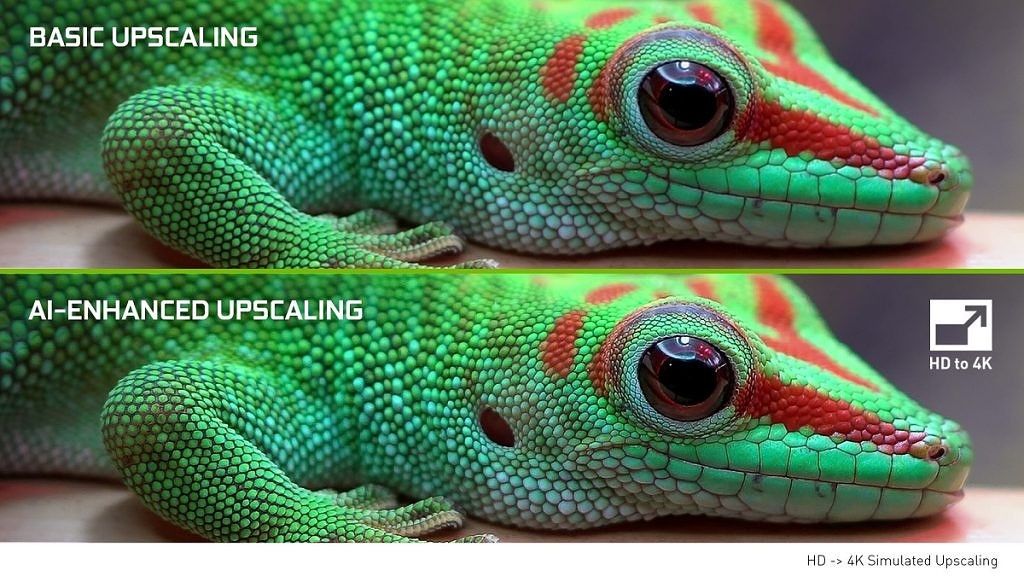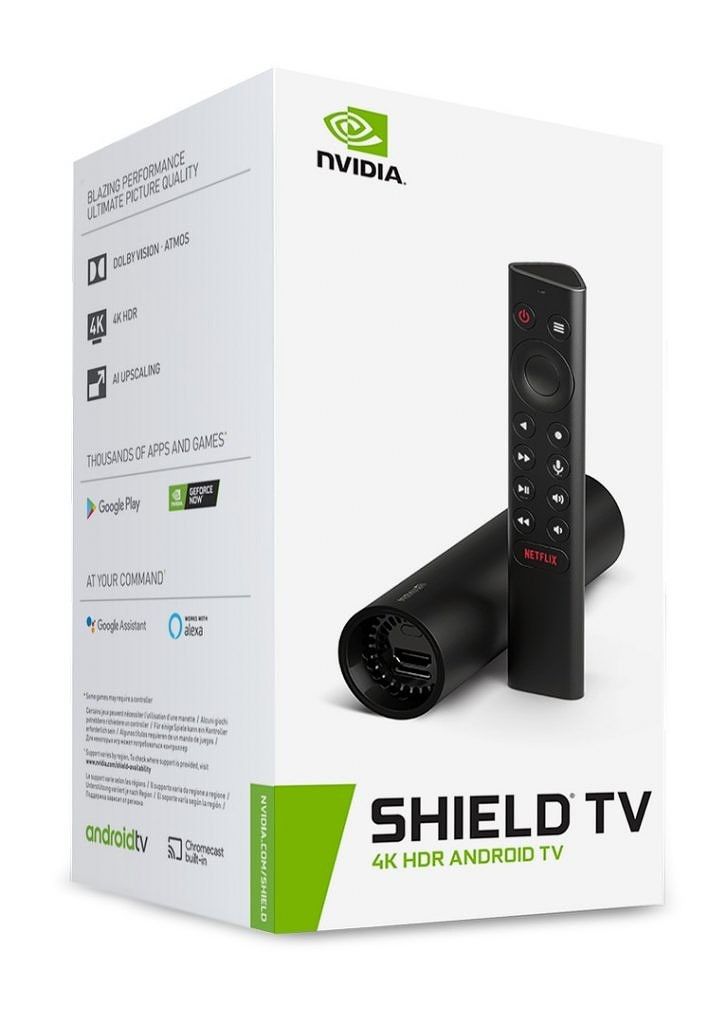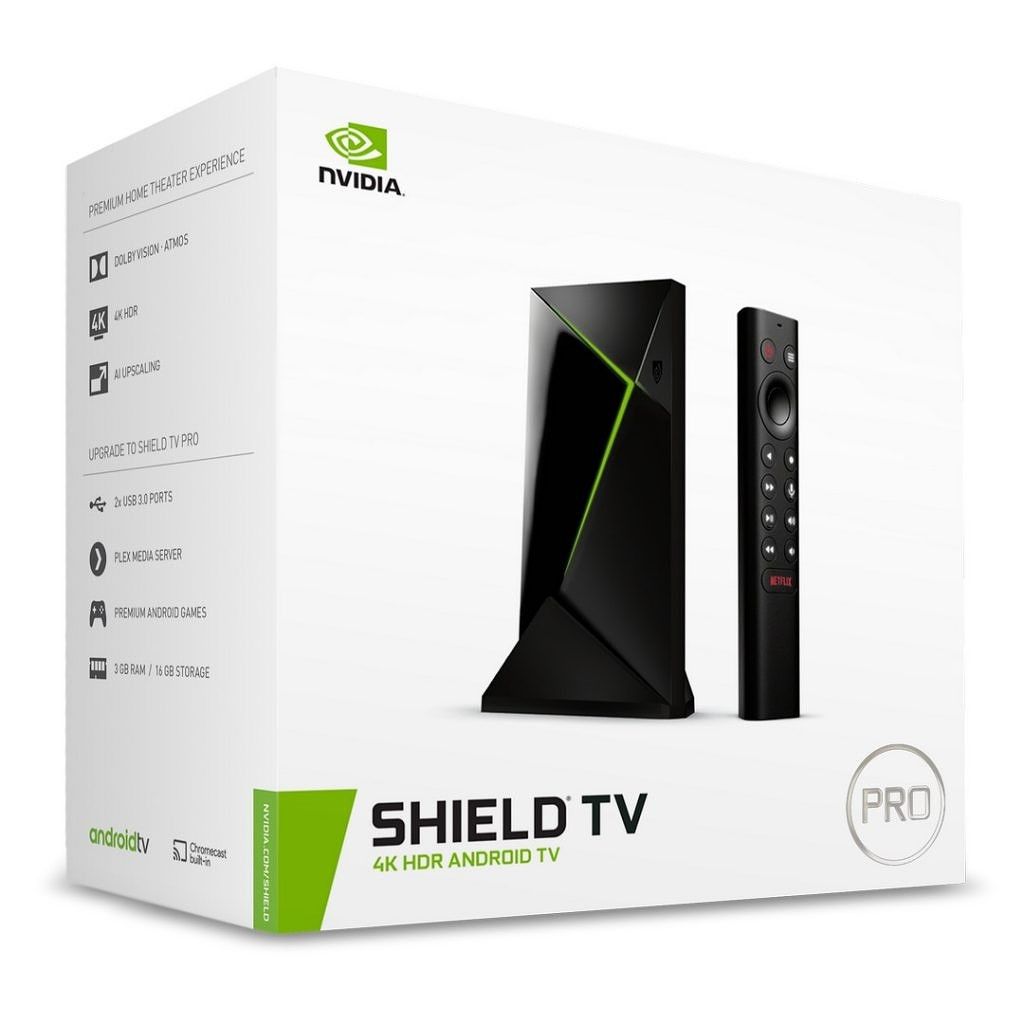To the surprise of no one who has paid attention, NVIDIA has revealed two new products in their line of Android TV devices. Both of these devices already showed up on Amazon and Best Buy, but now we can put the "Official" stamp on them. The NVIDIA SHIELD TV Pro is an update to the popular SHIELD TV media streaming boxes, and it's joined by a more portable SHIELD TV streaming stick.
Before we talk about what's different between the two new SHIELD TV devices, let's talk about what's the same – because there's a lot.
New to SHIELD: Tegra X1+, AI Upscaling, Dolby Vision, More
Tegra X1+ - A Minor Refresh
Both new SHIELD TV products are powered by the Tegra X1+ chip with a 256 core NVIDIA GPU. This new SoC isn't a huge upgrade over the Tegra X1, which was found in the 2015 and 2017 SHIELD TV models, though NVIDIA promises up to a 25% bump in performance. The newer SoC is built on the same architecture as the previous generation, but thanks to a die shrink, NVIDIA managed to eke out more performance.
The Tegra X1+ (model number t210b01) is manufactured by TSMC on a 16nm process. It has an octa-core CPU consisting of 4 ARM Cortex-A57 and 4 ARM Cortex-A53 cores. The GPU features the Maxwell microarchitecture in a 16x16 core configuration. The exact CPU and GPU frequencies weren't disclosed by NVIDIA before launch, but it's unlikely to be underclocked like the Nintendo Switch.
Dolby
A big part of any TV device is the picture and audio quality. The SHIELD TV supports both Dolby Vision and HDR10. Dolby Vision is arguably better than HDR10 as it includes metadata for dynamic adjustment of HDR based on the scene, but HDR10 is support allows for broader content support. Dolby Vision support is a big deal as it's a feature that users have repeatedly asked for on older models. During a briefing, NVIDIA was asked if it plans to bring Dolby Vision support to older devices, but the company said that it wouldn't be able to due to technical limitations.
Sadly, there's no VP9 Profile 2 support for HDR content in YouTube as NVIDIA says the processor doesn't support it. The device is capable of supporting HDR10+, but NVIDIA was unable to confirm if either SHIELD will be updated to support it in the future.
Unlike the previous models which only had passthrough support for Dolby Atmos, the new SHIELD now features proper decode support for Dolby 5.1 surround sound. That means you'll get proper Atmos support in Netflix. Dolby Digital Plus, Dolby TrueHD, DTS-HD, and DTS-X support are also present on both new SHIELD devices.
AI Upscaling
Thanks to the improved Tegra X1+ SoC, NVIDIA is using AI for real-time upscaling of video and gaming content, which the company claims is a first for streaming media players. NVIDIA trained a convolutional neural network (CNN) to predict the difference between high-resolution, original 4K reference videos and linear scaled videos. Then, NVIDIA put the trained model on the processor to have it upscale any content that is 720p or 1080p (up to 30fps) to a higher quality than is possible with traditional upscaling (such as bilinear). For example, HD content can be upscaled to near-4K quality.
You can preview how it looks in real-time with a slider by enabling the AI demo mode, but if you aren't a fan of how it looks, you can disable it entirely in settings. It works with top video streaming services like YouTube, Netflix, Amazon Prime Video, etc., but it also works with games. You can adjust the Detail level in this AI-Enhanced mode between Low, Medium, or High.
Besides this AI-Enhanced mode, there's also a standard Enhanced mode that's new to the SHIELD TV 2019. It's an improved upscaler compared to the "Basic" mode that's present on the 2017 model, and it works on all video content, even content running at up to 60fps.
Android 9 Pie with Android TV
NVIDIA is a strong partner of the Android TV ecosystem, so both SHIELD TV products are built with the latest version of Android TV. NVIDIA promises an ad-free, customizable home screen. Both devices feature full Google Cast support, the redesigned Google Play Store shown off at Google I/O, Google Assistant with custom routines, and a range of music services, including the recently-added Amazon Music. Both devices even work with Amazon Alexa voice commands, provided you have Alexa-enabled smart speakers or displays. Finally, when Disney+ launches, it'll be on SHIELD TV with Dolby Vision and Atmos support.
Since the last SHIELD TV was released in 2017, cloud gaming has significantly matured, so of course, NVIDIA is touting its own GeForce Now game streaming service. At launch, GeForce Now provided a small catalog of games to stream, but it's since moved to a "bring-your-own-game" model so you can play games like the recently released Fortnite Season 2 on the SHIELD. Although GeForce Now is still free since it's in beta, there's a waitlist to gain access to the service. If you're already in the beta, you'll be able to immediately play on the new SHIELD TV, but if you haven't joined yet, you'll have to wait around 1-2 weeks in most regions to get in. NVIDIA hasn't settled on any formal pricing for the service, but they'll share more information when it's ready for commercial launch. As for Google Stadia, it should eventually come to the device if Google's Android TV update roadmap pans out, but NVIDIA had little to say on this matter.
SHIELD TV Streaming Stick
The SHIELD TV streaming stick, which is officially called just "SHIELD TV," is the cheaper of the two new devices. The name is familiar, but this is a radically new form factor for the SHIELD TV lineup. Instead of a typical set-top box, the SHIELD TV is a cylindrical dongle that hangs out of sight. It was designed so that it can be pulled away from behind the TV because WiFi can have trouble penetrating TVs. If you have to hang it behind a TV, though, the dongle has a gigabit Ethernet port. Besides the aforementioned Ethernet port, the available ports include an HDMI port with CEC, a microSD card slot, and a power port.
Rounding out the specs, the SHIELD TV stick has 8GB of internal storage, 2GB of RAM, 802.11ac Wi-Fi, and Bluetooth 5.0 LE. NVIDIA says the device has enough storage for "50-70 streaming apps," leaving nearly 5GB of usable storage for user-installable applications.
For the most part, this is a streaming stick that has all the bells and whistles of a full-blown set-top box. It's available for $149.99 starting today both online and in retail stores in the United States, Canada, and Europe.
SHIELD TV Pro
Next up is the SHIELD TV Pro. NVIDIA is billing this as a device "built for enthusiasts." They say it was built for the most demanding media and gaming consumers. This is the SHIELD you want if you're interested in storing a media collection, playing demanding games, or having a smart home hub. The SHIELD TV Pro has all the features mentioned earlier, but it's in a more traditional set-top box form factor.
On top of all that, though, the Pro model has a few upgrades. RAM is bumped up to 3GB, storage is bumped to 16GB, and there are two full-sized USB 3.0 ports. You can use these to plug in a SmartThings Link to turn the box into a smart home hub. The SHIELD TV Pro also has Plex Media Server built-in and it supports 1080p transcoding. You can easily record gameplay, broadcast gameplay to Twitch, or play a bevy of high-end titles from NVIDIA's catalog of AAA ported games, including Half-Life 2, Portal 2, Borderlands 2, Resident Evil 5, etc., exclusively for the Pro model.
You can get the SHIELD TV Pro for $199.99 starting today both online and in retail stores in the U.S., Canada, and Europe. There's no 512GB storage model because NVIDIA points to the ability to adopt external storage as internal storage (a native feature of Android), the added NAS support, and low demand for high local storage.
New Remote, Bring Your Own Controller
If you've used a SHIELD TV before, you probably understand why I saved the remote for last. The old remote was arguably the worst thing about the SHIELD TV. It was flat, very small, and didn't have many buttons. Thankfully, NVIDIA has completely redesigned the remote this time, and it comes in-the-box for both the SHIELD TV and the SHIELD TV Pro.
The new SHIELD remote looks a lot more like a traditional TV remote. It's thicker and kind of triangular. It also has many more buttons and it takes 2 regular AAA batteries. There is a microphone for voice controls, motion-activation to activate the backlight on the buttons when you pick up the remote, an IR blaster for controlling TVs, Bluetooth, and a lost remote feature. The buttons include power, play, record, pause, forward, reverse, volume, Netflix, voice commands, a circular direction pad, and on the top right, a customizable button with up to 40+ actions.
NVIDIA confirmed to us that they considered the possibility of selling the stick model without the remote for a lower price, but they ultimately decided against it because of the strong desire for folks to have a physical remote. For those of you with an older SHIELD looking to buy this remote separately, it'll go on sale later this year for $29.99. Again, it comes in-the-box with the SHIELD TV and SHIELD TV Pro, so you won't have to buy it separately if you buy either of the new devices.
Last but not least is the controller, or rather the lack thereof. There's no included SHIELD Controller this year. You can buy the existing SHIELD Controller from NVIDIA to use as a game controller, or you can use your existing XBOX One Wireless, DualShock 4, or other Bluetooth controllers. NVIDIA says the new SHIELDs support a range of controllers, but there's no guarantee every controller will work. There's no built-in controller remapper, either, so it's recommended you stick with a more popular controller for guaranteed support.

